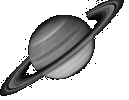
Blackholes2 Forum Message | |
| Forums: |
Atm ·
Astrophotography ·
Blackholes ·
Blackholes2 ·
CCD ·
Celestron ·
Domes ·
Education
Eyepieces · Meade · Misc. · God and Science · SETI · Software · UFO · XEphem |

 |
|
 |
||||
|
|
||||||
Be the first pioneers to continue the Astronomy Discussions at our new Astronomy meeting place... The Space and Astronomy Agora |
| Re: Simple Question
Forum List | Follow Ups | Post Message | Back to Thread Topics | In Response To Posted by Zephram Cochrane/">Zephram Cochrane on February 24, 2000 06:02:15 UTC |
|
: If light has no mass, why can't it escape the gravitational pull of a black hole, seeing as an object requires mass to be "pulled" on? I'd like to go into more detail with a few points here. 1st. There are different definitions for mass that are used in ordinary conversation. In SR what is meant by the word mass in the context of "light has no mass" is the m in E2 = p2c2 + m2c4 And is specifically a reference to an individual photon's mass. p is the momentum of the photon or particle in question. Notice that if a particle were at rest p would be zero and m would just be given by the amount of energy it has at rest. Because of this some people qualify this kind of mass, calling it rest energy or sometimes rest mass. I almost never qualify it. When I say mass when talking about SR I am always referring to the m in this equation. In GR mass almost always means the m in m2c2 = gmnPmPn. In an SR limit this reduces to the same equation as above. Because the full contraction of any tensor is an invariant this m is sometimes called invariant mass. Again I rarely qualify it. When I say mass without qualifying it while talking about GR I always mean the m in this equation and am only applying it to an individual particle. The only time I'll apply it to a system of particles is when it makes sense to treat the system as a single object. Otherwise for extended bodies, "system mass" is useless. Then I will only talk about System mass density which is useful. 2nd. About "pulls". If we restrict ourselves to using ordinary three component vectors in a SR revision of Newtonian mechanics it turns out the equation F = ma doesn't hold true anymore. However, F = dp/dt does hold true. So this is what Newton's second law really should be. But now a particle needn't have mass to be "pulled". All it needs is momentum. 3rd. In GR ordinary three vectors are replaced with four component tensors called four vectors. The equation F = dp/dt becomes Fm = DPm/Dt Where D/Dt Is the covariant derivative with respect to proper time. It is a special kind of derivative that takes into account the geometry(i.e. metric tensor gmn) of the space-time itself. In the case of gravitation and no other force Fm = 0. What is left is called the geodesic equation. In other words gravitation isn't a force in the same sense as other four vector forces. The four vector force of gravitation is zero. Instead gravity is the tendency for particle to follow geodesics in curved space and time.
|
|
| Additional Information |
|---|
| About Astronomy Net | Advertise on Astronomy Net | Contact & Comments | Privacy Policy |
|
Unless otherwise specified, web site content Copyright 1994-2025 John Huggins All Rights Reserved Forum posts are Copyright their authors as specified in the heading above the post. "dbHTML," "AstroGuide," "ASTRONOMY.NET" & "VA.NET" are trademarks of John Huggins |